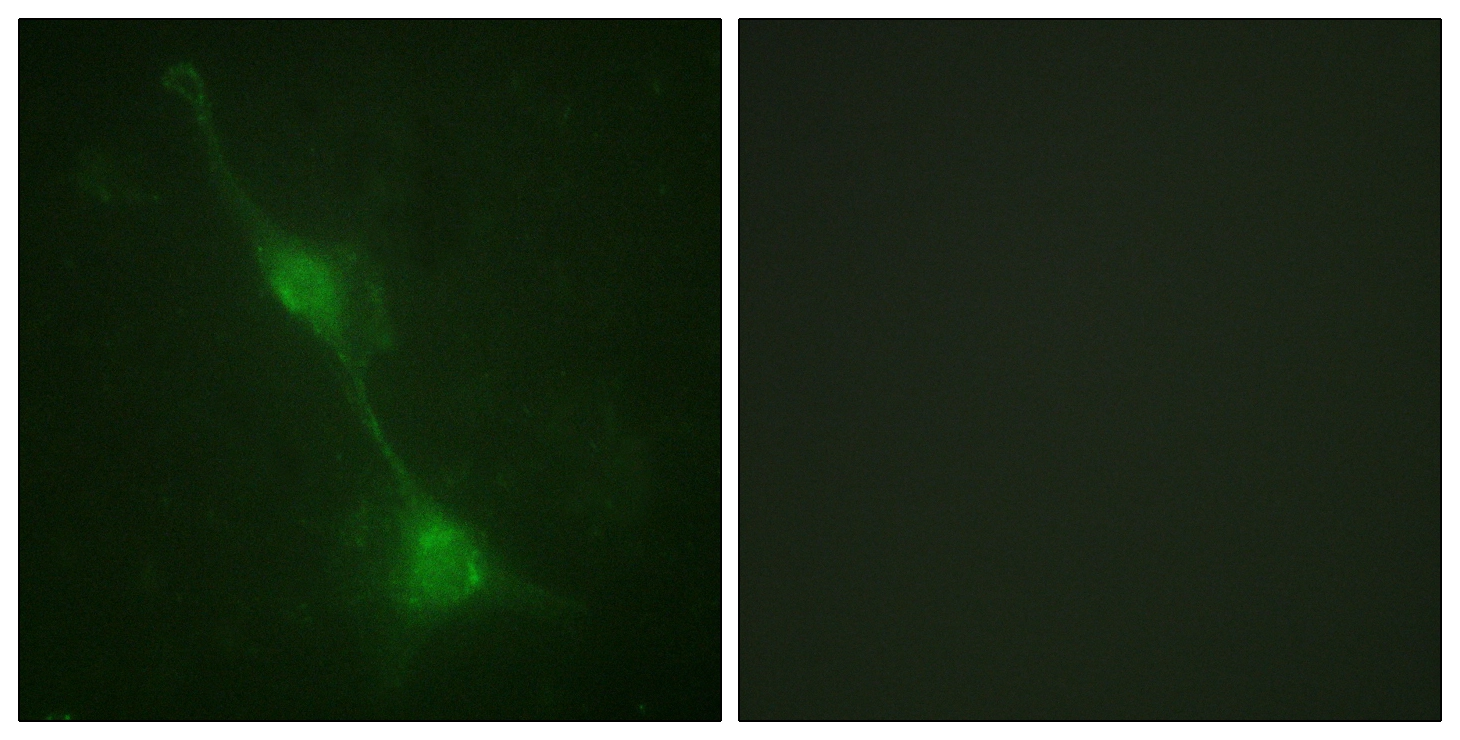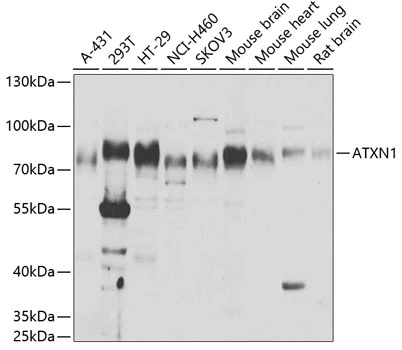
WB analysis of various sample lysates using GTX30078 Ataxin 1 antibody. Dilution : 1:1000 Loading : 25microg per lane
Ataxin 1 antibody
GTX30078
ApplicationsImmunoFluorescence, Western Blot, ImmunoCytoChemistry
Product group Antibodies
ReactivityHuman, Mouse, Rat
TargetATXN1
Overview
- SupplierGeneTex
- Product NameAtaxin 1 antibody
- Delivery Days Customer7
- Application Supplier NoteWB: 1:500 - 1:2000. ICC/IF: 1:10 - 1:100. *Optimal dilutions/concentrations should be determined by the researcher.Not tested in other applications.
- ApplicationsImmunoFluorescence, Western Blot, ImmunoCytoChemistry
- CertificationResearch Use Only
- ClonalityPolyclonal
- ConjugateUnconjugated
- Gene ID6310
- Target nameATXN1
- Target descriptionataxin 1
- Target synonymsATX1, D6S504E, SCA1, ataxin-1, alternative ataxin1, spinocerebellar ataxia type 1 protein
- HostRabbit
- IsotypeIgG
- Protein IDP54253
- Protein NameAtaxin-1
- Scientific DescriptionThe autosomal dominant cerebellar ataxias (ADCA) are a heterogeneous group of neurodegenerative disorders characterized by progressive degeneration of the cerebellum, brain stem and spinal cord. Clinically, ADCA has been divided into three groups: ADCA types I-III. ADCAI is genetically heterogeneous, with five genetic loci, designated spinocerebellar ataxia (SCA) 1, 2, 3, 4 and 6, being assigned to five different chromosomes. ADCAII, which always presents with retinal degeneration (SCA7), and ADCAIII often referred to as the pure cerebellar syndrome (SCA5), are most likely homogeneous disorders. Several SCA genes have been cloned and shown to contain CAG repeats in their coding regions. ADCA is caused by the expansion of the CAG repeats, producing an elongated polyglutamine tract in the corresponding protein. The expanded repeats are variable in size and unstable, usually increasing in size when transmitted to successive generations. The function of the ataxins is not known. This locus has been mapped to chromosome 6, and it has been determined that the diseased allele contains 40-83 CAG repeats, compared to 6-39 in the normal allele, and is associated with spinocerebellar ataxia type 1 (SCA1). Alternative splicing results in multiple transcript variants, with one variant encoding multiple distinct proteins, ATXN1 and Alt-ATXN1, due to the use of overlapping alternate reading frames. [provided by RefSeq, Nov 2017]
- ReactivityHuman, Mouse, Rat
- Storage Instruction-20°C or -80°C,2°C to 8°C
- UNSPSC12352203

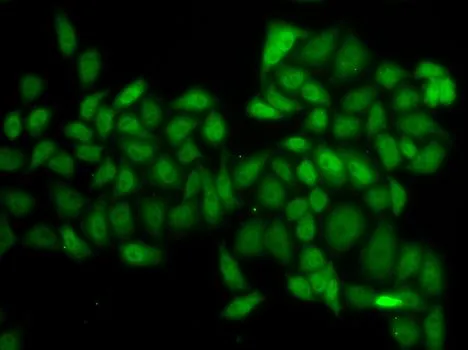
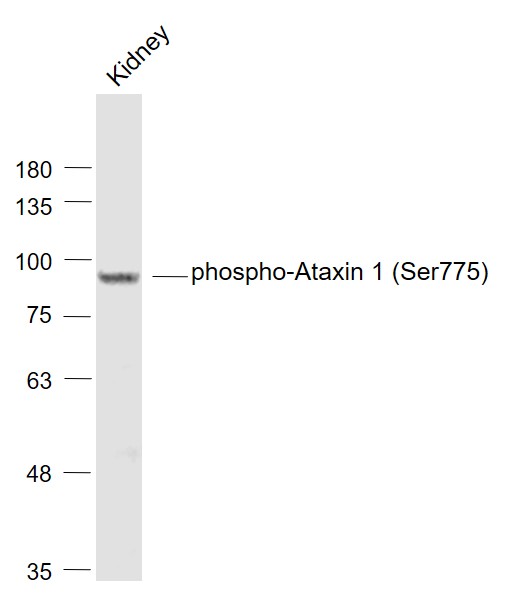

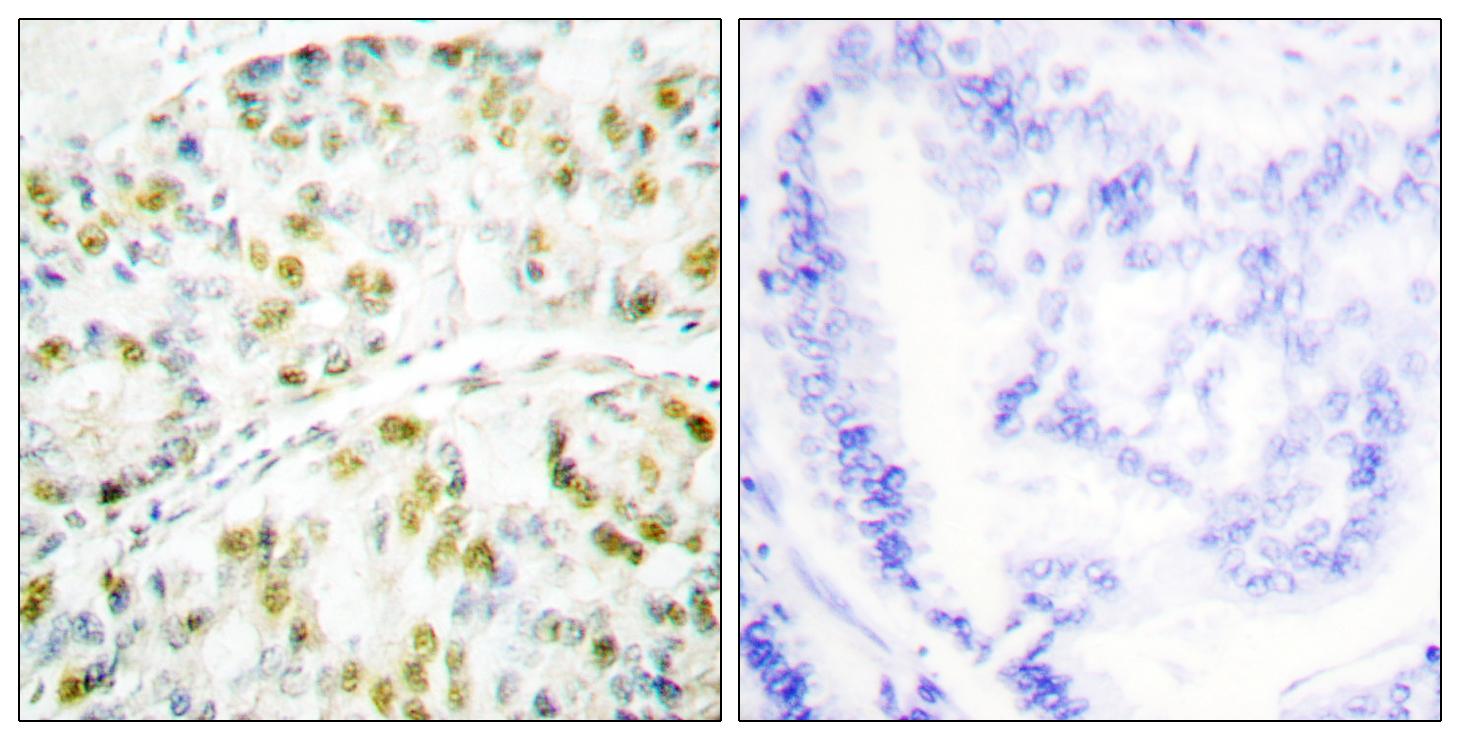

![FACS analysis of Jurkat cells using GTX80399 Ataxin 1 antibody [2F5]. Green : Ataxin 1 Purple : negative control](https://www.genetex.com/upload/website/prouct_img/normal/GTX80399/GTX80399_20170912_FACS_w_23061322_219.webp)
